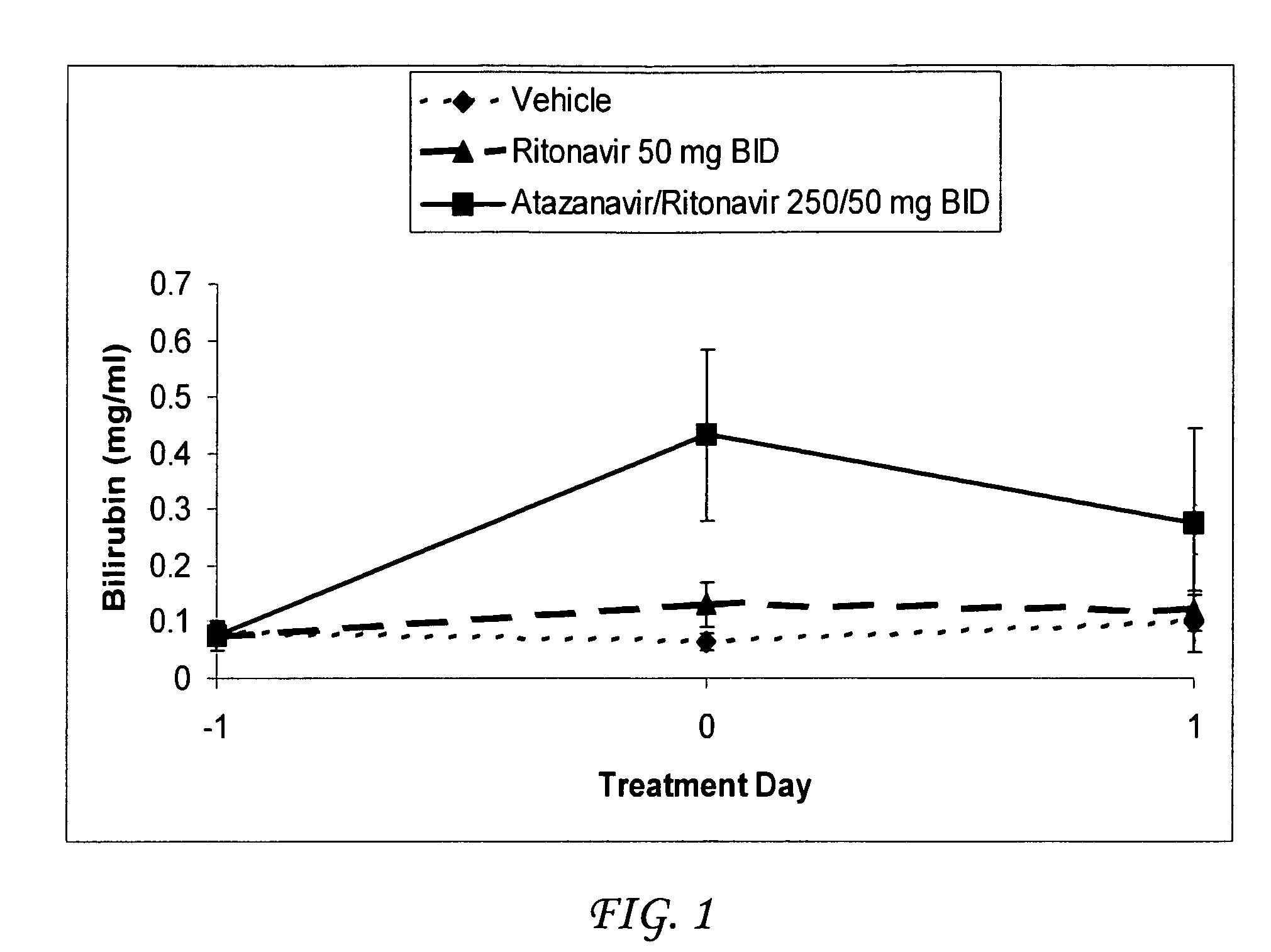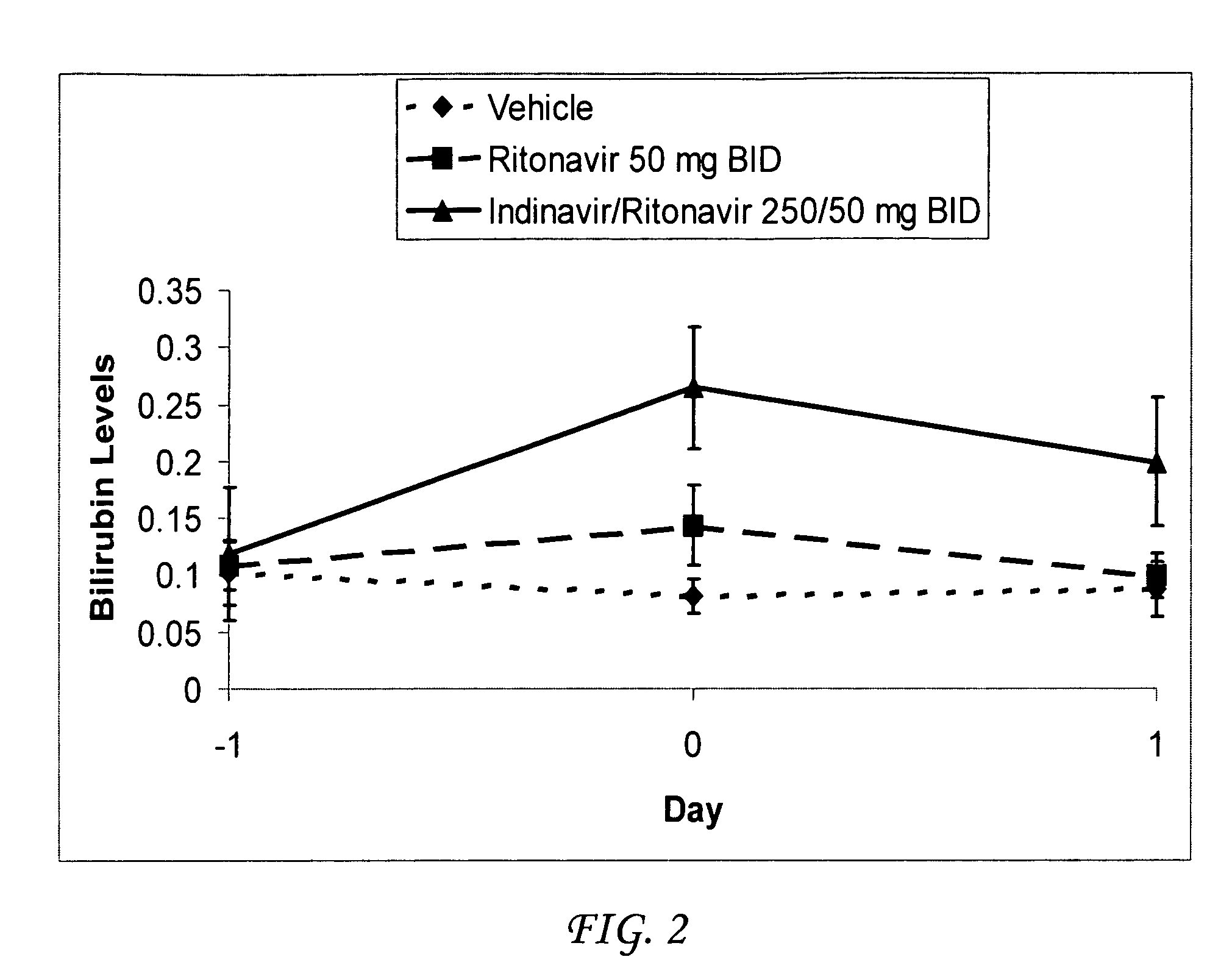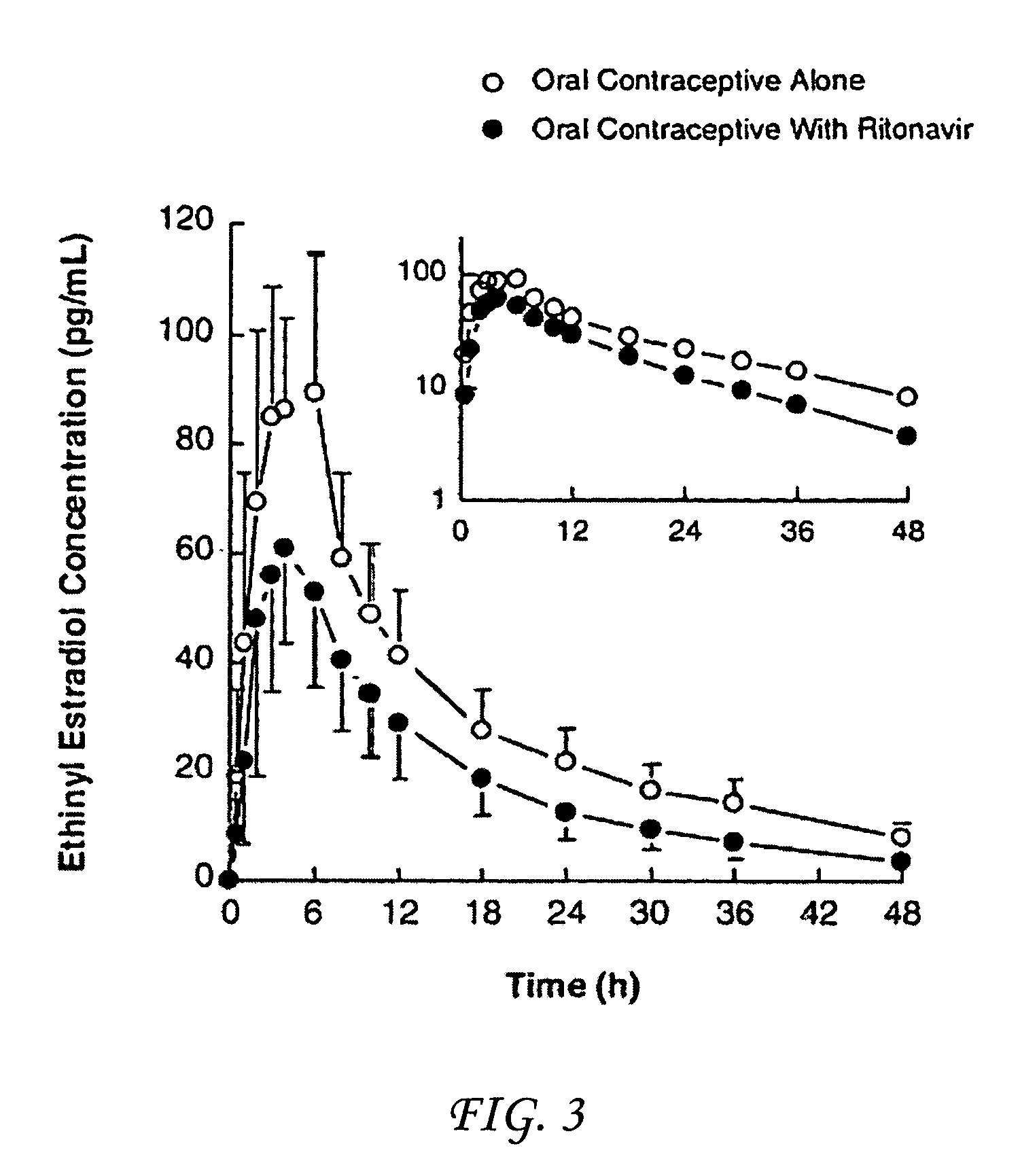Method for treating a disease, disorder or adverse effect caused by an elevated serum concentration of an UGT1A1 substrate
a technology of ugt1a1 and serum concentration, which is applied in the direction of drug compositions, peptide/protein ingredients, extracellular fluid disorder, etc., can solve the problems of unconjugated hyperbilirubinemia and a 6-25% incidence of asymptomatic patients
- Summary
- Abstract
- Description
- Claims
- Application Information
AI Technical Summary
Benefits of technology
Problems solved by technology
Method used
Image
Examples
example 1
[0043]Atazanavir / ritonavir were co-administered to Gunn rats (n=8) which are deficient for UDP-glucuronosyltransferase (UGT) activity by gavage at a total daily dosage of 500 / 100 mg / kg / day. A second set of rats received ritonavir at a total daily dosage of 100 mg / kg / day. A third group of rats was administered vehicle only. Atazanavir was formulated in a vehicle consisting of 5% EtOH:95% propylene glycol (PG):1 molar equivalent of p-toluene sulfonic acid. Ritonavir was formulated in a vehicle consisting of 5% EtOH:95% propylene glycol (PG):2 molar equivalents of p-toluene sulfonic acid. Formulations were prepared so that all rats received a total constant volume of 2 ml / kg with each treatment. Rats were dosed twice daily on Day 0 approximately twelve hours apart, and a third time in the morning on Day 1, for a total of three doses.
[0044]A sample of blood (approximately 0.5 ml) was collected from each rat via the jugular vein into a plain microcentrifuge tube (no anticoagulant) 4 hour...
example 2
[0046]Male Sprague-Dawley rats approximately 6–12 weeks of age and weighing between 225 and 275 grams were dosed orally with ritonavir at the indicated concentrations. Ritonavir was formulated in 5% ethanol:95% propylene glycol:2 molar equivalents of p-toluene sulfonic acid. The rats were dosed daily for one or three days, and were sacrificed on the following day. Approximately 100 mg from each liver was placed into TRizol® reagent, and immediately homogenized using a Turrax tissue grinder.
[0047]RNA preparation and analysis was done according to the Affymetrix Inc. protocol. The integrity of the RNA from the pooled samples was determined using an Agilent 2100 Bioanalyzer. cDNA was prepared from 15 ug of RNA using the Superscript Choice system from Gibco BRL Life Technologies (Cat. No. 18090-019). The Gibco protocol was followed exactly, with the exception that the primer used for the reverse transcription reaction was a modified T7 primer with 24 thymidines at the 3′ end. The sequen...
example 3
[0052]Ritonavir was prepared as 7.5 and 25 mg / mL solutions in 5% ethanol, 95% propylene glycol and 2 molar equivalents of p-toluenesulfonic acid. Rats in the control group received vehicle consisting of 5% ethanol, 95% propylene glycol and 37.6 mg / mL p-toluenesulfonic acid. Sodium phenobarbital dose solution was prepared in normal saline at a concentration of 25 mg base / ml.
[0053]Sixteen male and female Sprague-Dawley rats (VAF Crl:CD@ (SD)BR) weighing about 250 g were obtained from Charles River Laboratories, Inc. (Portage, Mich.). The rats were randomly divided into four treatment groups shown in Table 2.
[0054]
TABLE 2Therapies received by Treatment Groups T0, T1, T2 and T3.NUMBER OFTREAT-RATSMENTFE-DOSAGEDURATIONGROUPMALEMALEDRUGMG / KG)(DAYS)T044Vehicle 014T144Ritonavir1514T244Ritonavir5014T344Phenobarbitol50 4
[0055]The animals were given free access to Certified Rodent Chow* #5002 pellets (Purina Mills, Inc., St. Louis, Mo.) and water. The rats were housed individually in stainless...
PUM
| Property | Measurement | Unit |
|---|---|---|
| Mass | aaaaa | aaaaa |
| Mass | aaaaa | aaaaa |
| Mass | aaaaa | aaaaa |
Abstract
Description
Claims
Application Information
 Login to View More
Login to View More - R&D
- Intellectual Property
- Life Sciences
- Materials
- Tech Scout
- Unparalleled Data Quality
- Higher Quality Content
- 60% Fewer Hallucinations
Browse by: Latest US Patents, China's latest patents, Technical Efficacy Thesaurus, Application Domain, Technology Topic, Popular Technical Reports.
© 2025 PatSnap. All rights reserved.Legal|Privacy policy|Modern Slavery Act Transparency Statement|Sitemap|About US| Contact US: help@patsnap.com



